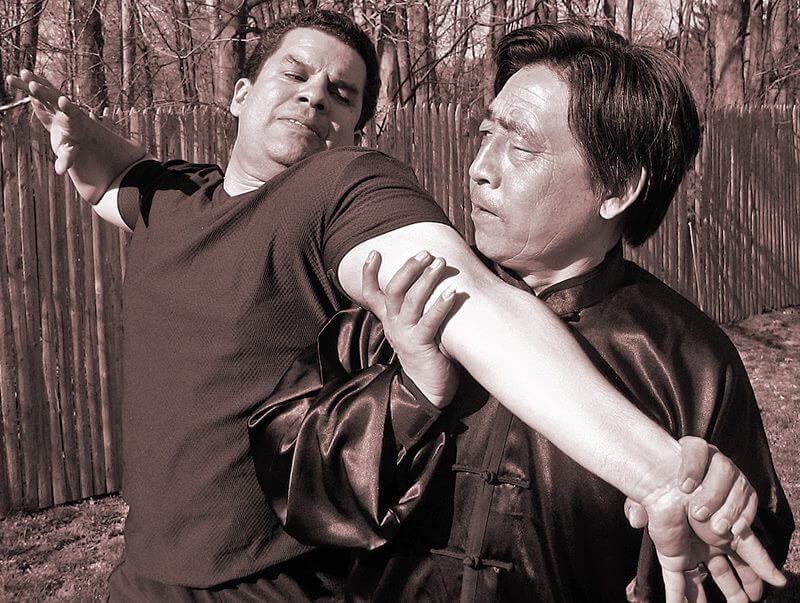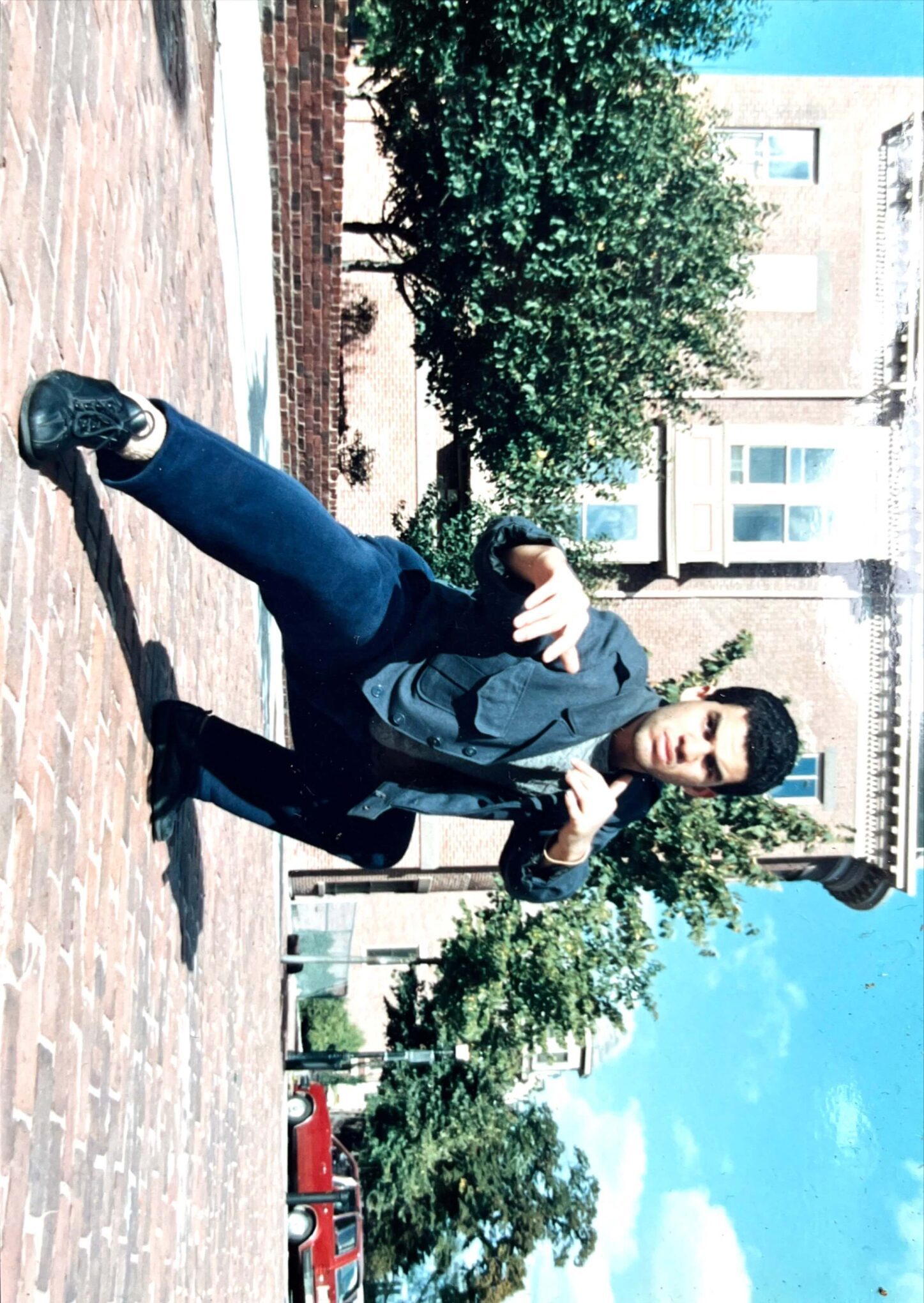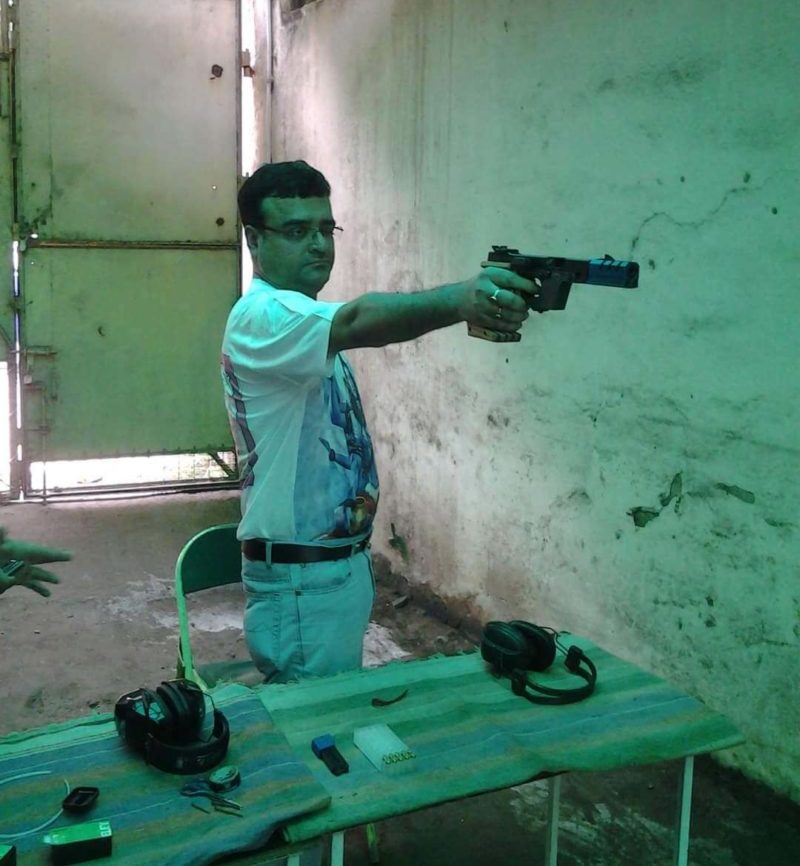Even before PTS had started, Shamsher with his imaginative and resourceful handling made organised performances or demonstrations in skydiving in some areas of the country. Interestingly, some PJI officers had made a few jumps too with his outfit and provided some rudiments of free-fall training. This week-end adventure of the PJI’s was short lived. Dicky would have none of it as Chief Instructor, PTS and it is in this decision that the seeds of a continuing struggle with the Para element of the Indian Army were sown. This was to recur on several fronts: active or incipient in the years to come. Sunil tells us how an idea bloomed into an extreme sport in India, in the weekly column, exclusively in Different Truths.
The Para Brigade was obviously keen and straining to make the Airborne forces the cutting edge of clandestine warfare, battle worthy and modern. The lethality of speed, surprise, and stealth coupled with a decisive blow brought upon the enemy deep behind their lines by the incorporation of combat free fall techniques was never lost on our very own and the valiant “maroon berets” On occasions, the Army had begun to show their displeasure at the slow rate of turnover of training, non-availability of adequate numbers of aircraft and the lack of sufficient orientation to battle worthiness. For it should be never be lost sight of that the very raison d’être of the Deva and Dhartiputras including, and not limited to Paratroopers Training School (PTS), their Vahanas, Vajras, and Astras was coterminous, if not dependent on the Chatta dhari sainiks of the Para Brigade.
The resultant turf war gave birth to competition and despite the limitations of non-availability of their own aircraft, parachute jump instructors and limited or no experience of independent dispatch of live troops from the aircraft including their training the Para Brigade went ahead in making the first ever Skydiving Club, open to all, including civilians. It was called the Skydiving Federation of India (SFI), at Agra. This was the mid-seventies, when one young, and dashing go-getter called Shamsher Singh, trained in free fall at PTS decided to help establish this club with the active support of his French wife and other like-minded senior officers of the Parachute Regiment. Particular mention needs to be made here of the then Brigade Commander I S Gill, Chawla, and Goswami. “Do not forget, my Lord,” Sanjaya reiterated along with Dicky Dhingra, Bunny Rao from the 50 Independent Parachute Brigade of the Indian Army had made the trip to Fort Bragg, USA. Murty, an accomplished Army free faller had also participated in the competitions held in France along with Tiwary (PJI).
Even before PTS had started, Shamsher with his imaginative and resourceful handling made organised performances or demonstrations in skydiving in some areas of the country. Interestingly, some PJI officers had made a few jumps too with his outfit and provided some rudiments of free-fall training. This weekend adventure of the PJI’s was short lived. Dicky would have none of it as Chief Instructor, PTS and it is in this decision that the seeds of a continuing struggle with the Para element of the Indian Army were sown. This was to recur on several fronts: active or incipient in the years to come.
Dhritarashtra was besieged with self-doubt. He did not have the heart to ask Sanjaya if the conflict was like the one between him and brother Pandu. Was it about power and control? Did this short-sightedness come in the way of a development that was inevitable? What was the Raja Dharma? He also realised, though, only Vidur, his half- brother, the paragon of truth or impartial judgment was capable of throwing true light on this fratricidal quarrel.
The strong Dhritarashtra, however, was quick to assess that the creation of this Federation under the auspices of the Army was a tribute to their confidence, daring and an overwhelming sense of urgency to upgrade an operational activity and acquire a tool that was being unpardonably delayed in employment. The making of this sport parachuting facility was in many ways also, a timely reminder to the Indian Air Force and PTS in particular that the latter was simply not doing enough. The cordiality and bonhomie at the inter-service coordination briefings and the dynamism and flexibility necessary in the joint ops planning and execution of Para exercises were visibly under strain. Paradoxically, though this was an important behind the scenes scrap that catalyzed a lot of progress in free fall techniques seen during this time. It would be, therefore, fair to say, that in the launch of sport parachuting in the country the Para Brigade of the Indian Army had an overwhelming hand.
Sanjaya now with his “Divya Drishti” threw light on the important innovations that were being introduced in military free fall. Vidur, a frequent companion of Dhritarashtra, in these story-telling sessions gave the interpretative dimension with his sagacity and knowledge of Raj Dharma. Parachute trials held at Agra had parachute wares of the Pioneer, Para Flite and a German company. Chawla of the Para Brigade and V P Lal, PJI followed by Mann, Ajoo, Qutubuddin, Banerjee, and Sandhu were testing the efficacy of “standoff operations” through the use of High altitude High Opening (HAHO) and High Altitude Low Opening (HALO) techniques. Weapons and equipment hitherto not used were tried out and the release of jumpers from a distance of about 20kms from designated target was tested for accuracy. The Ram-air driven, aero foil design, seven cell canopy was the new state-of-the-art parachute with a forward speed of about 20-30kms per hr. in nil wind conditions.
Suffice it is to say that it was a paradigm shift from the low porosity, steerable round canopies. History  aficionados would also note that in the Aviation Research Centres under the Ministry of Home considerable progress had already been made. This was another nursery for parachuting especially military free fall. (MFF). PJI’s, the likes of Anand, Palat, Gomes, and the Special Forces among others were busy into innovations in the methodology of delivery of important munitions and equipment through parachutes. Packing techniques, equipment servicing and management, storage and modifications required had made rapid strides The Americans were providing the “think”. The rudiments and the rubric of what was to become of MFF in the days to come was there for the discerning to see. In these daring forays of seeking new knowledge and their execution the designated personnel of the Air Force and Army subconsciously became self – reliant and were filled with self-belief for adventurous pursuits in a new domain of sport parachuting.
aficionados would also note that in the Aviation Research Centres under the Ministry of Home considerable progress had already been made. This was another nursery for parachuting especially military free fall. (MFF). PJI’s, the likes of Anand, Palat, Gomes, and the Special Forces among others were busy into innovations in the methodology of delivery of important munitions and equipment through parachutes. Packing techniques, equipment servicing and management, storage and modifications required had made rapid strides The Americans were providing the “think”. The rudiments and the rubric of what was to become of MFF in the days to come was there for the discerning to see. In these daring forays of seeking new knowledge and their execution the designated personnel of the Air Force and Army subconsciously became self – reliant and were filled with self-belief for adventurous pursuits in a new domain of sport parachuting.
 A new generation of MFF instructors had become by this time up and ready. Free fall was exciting, challenging and safe but never was meant for the faint of heart. It was “doable” and was not in the realm of voodoo art any more. Paliwal was more confident with the years behind him and the legacy of a rock-hard structure of training created by Mayor. The gates of free fall training were thrown open and the extreme regimentation and difficult requirements were relaxed. These then were the fortunate ones. The officers were mostly from the premier Military Academy called National Defense Academy (NDA) with prior flying knowledge and experience and some from the civil streets direct. They were tall, broad shouldered, strong and handsome men with an after shave flavor of arrogance: the likes of Mann, Mittal, Mahajan, Ajoo, Kallan, and Rath into this quality composition, Venu, Pandey and Om Prakash recruited from the civil streets and for the non-technical branches, the direct entries (DEs) sweated hard and worked overtime. The Sutaputras, like Karna, went on to become a part of the legitimate bloodstream just like their illustrious predecessors.
A new generation of MFF instructors had become by this time up and ready. Free fall was exciting, challenging and safe but never was meant for the faint of heart. It was “doable” and was not in the realm of voodoo art any more. Paliwal was more confident with the years behind him and the legacy of a rock-hard structure of training created by Mayor. The gates of free fall training were thrown open and the extreme regimentation and difficult requirements were relaxed. These then were the fortunate ones. The officers were mostly from the premier Military Academy called National Defense Academy (NDA) with prior flying knowledge and experience and some from the civil streets direct. They were tall, broad shouldered, strong and handsome men with an after shave flavor of arrogance: the likes of Mann, Mittal, Mahajan, Ajoo, Kallan, and Rath into this quality composition, Venu, Pandey and Om Prakash recruited from the civil streets and for the non-technical branches, the direct entries (DEs) sweated hard and worked overtime. The Sutaputras, like Karna, went on to become a part of the legitimate bloodstream just like their illustrious predecessors.
They led a small lot of select, senior non-combatant instructors who matched their officers in everything that they did. Coming from simple backgrounds and with rudimentary education, dif ferent communities, religions, languages and geographical areas they welded together asymmetrically into a high performing unit. To name a few, they were (other than the pioneering instructors) Bhushan Kumar, Ravi Kumar, R Singh, Augustine, Anthony, Umed, Dutta, Ahmed, Ghosh, as Dubey, Kadam, Kolte, G Singh, Ramchandra, Garede, Sandhu, and Surat. This proud set of instructors had together tried to improve on the art of “style” and “relative work” in sport parachuting. While exiting from the side or from the rear of Packets, Mi-4’s, Otters or the MI-8’s on routine free-fall training jumps and even critical demonstrations they used to by turns try their hand at this. When two or sometimes even four managed to link up in the sky there was many a delightful story to be heard. Their success in the sky meant not making to the “target” (the designated point of landing) and a long and weary trudge back laced with endless cursing of the “bad spot” (release computation).
The struggle and competition, the cooperation and conflict between the intense devotion and the possessive zeal of the Dhartiputras against the operational drive of the Army paratroopers paradoxically had created a tenuous platform for the skills and attributes necessary for sport parachuting to be born. The brinkmanship still had the potential for a win-win situation for all.
©Sunil Kumar Banerjee
Photos sourced by the author.








 By
By

